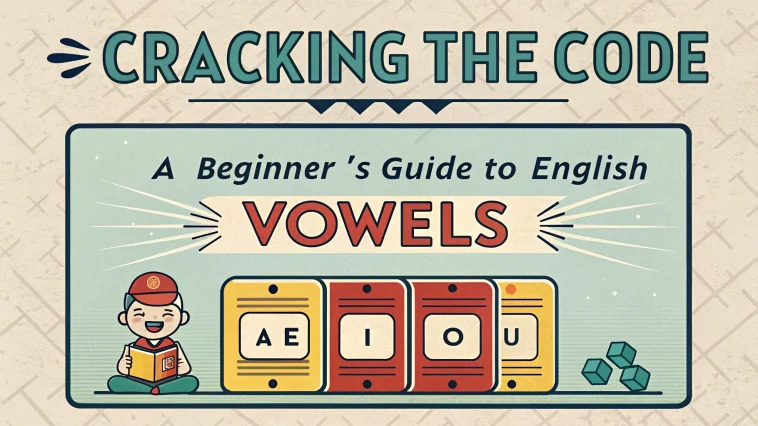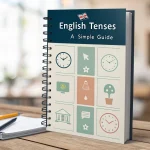Do you know the English vowels? Have you ever come across this sentence before? Have you read about them in a book or heard about them from a teacher? If you’ve been through middle school, there’s no doubt that you studied this rule in your English lessons. Maybe you didn’t get enough information about it, but surely you learned a little about the “English vowels” rule. Anyway!
In today’s article, we will introduce you to one of the most important rules in the English language, which is the “English vowels” rule. Keep reading to benefit from this article.
An Introduction to English Vowels
What do we mean by English vowels? It is well-known that the English language contains two types of letters: vowel sounds and consonant sounds. Both types are often mentioned together. It’s also worth mentioning that there are “5” vowels in English: “a, o, i, e, u”. Sometimes the letter “Y” is also considered a vowel, depending on its position in a sentence.
It’s said that English vowels are letters that enter into a sentence, change its meaning, and require intensive practice to learn how to pronounce them correctly. The vowel sounds come from the lungs and pass through the vocal cords. To pronounce these vowels correctly, it’s important not to block the airflow, as consonants are produced by blocking the air in the throat. Keep in mind, every English word contains at least one vowel letter, and it’s important to note that each vowel has 20 different vowel sounds, which requires a lot of practice to learn.
How to Pronounce English Vowels
As mentioned earlier, each vowel has 20 different sounds, which makes pronouncing English vowels quite challenging. This can be difficult even for native English speakers! So, it’s no surprise if beginners find it tricky. The way vowels are pronounced can also depend on the speaker’s country. For example, British and American pronunciations of vowels are quite different. Let’s now show you how to pronounce the English vowels:
How to Pronounce the Letter “A”
This vowel is pronounced with a more open or relaxed sound depending on its position in a word. For example, the vowel “A” is pronounced more softly in the word “Apple,” but more strongly in the word “Army.” Sometimes, the vowel “A” is not pronounced at all, like in the word “Care” because of the letter “e” at the end. The vowel “A” has two sounds: a short sound “uh” and a long sound “ay,” which change depending on where it appears in the sentence.
How to Pronounce the Letter “I”
The vowel “I” has two sounds: a short sound and a long sound. The short sound comes from the back of the throat, like “ih,” while the long sound is like the pronoun “I,” pronounced as “eye.” Sometimes, the vowel “I” is not pronounced at all in certain words, like in “high,” where the “G” and “H” before it are silent.
How to Pronounce the Letter “E”
The vowel “E” also has two sounds: a short sound “ee” and a long sound “eee.” Sometimes, it’s not pronounced at all, like in the word “dare,” because the vowel “E” is at the end of the word. The same applies if the word starts with “E,” like in “Europe.”
How to Pronounce the Letter “O”
This vowel also has two sounds: a short sound and a long sound. The short sound occurs between the letters “O” and “U,” while the long sound is like “OH.” If the letter “A” comes after “O,” the sound is prolonged a little, like in the word “board.” If the letter “E” comes after “O,” the two vowels sound together as “E,” like in “People.”
How to Pronounce the Letter “U”
The vowel “U” has two sounds: a short sound and a long sound. When this vowel comes between two vowel letters, it is pronounced short, like in the word “sun.” When it is pronounced long, it sounds like “oo,” as in “rule.” There are exceptions, like when “U” comes after “G,” and it is not pronounced at all, as in “duke.”
Examples of Vowels in English
Here are some examples of how vowels are pronounced in English:
- The vowel “A” sounds like the Arabic letter “A” in these words:
- Car
- Hat
- Cat
- The vowel “A” sounds like “O” because of the consonant in these words:
- Tall
- Ball
- Call
- The vowel “A” sounds like “E” when the word has four letters ending with “E”:
- Hate
- Same
- Came
- The vowel “U” sounds short in these words:
- But
- Duck
- The vowel “U” sounds like “O” in these words:
- About
- Shout
- Out
- The vowel “I” sounds like “ee” in words that start with “I” or don’t end with “E”:
- Sick
- Ink
- Pick
- The vowel “I” sounds like “I” when it’s in the middle of a word and ends with “E”:
- Shine
- Wife
- The vowel “E” sounds like “ee” when it is followed by “A” or when “E” is doubled in a word:
- See
- Clean
- Sea
- Fear
- Three
- The vowel “O” sounds like “O” in these words:
- Go
- Goal
- Snow
- Good
These are some examples of how English vowels are pronounced. You can learn these and start using them in your daily life. However, it’s important to remember that English vowel pronunciation has some exceptions, and the rules we discussed may not always apply.
We hope you enjoyed reading this article and found it useful!
Read this article: All tenses in English: A Simple Guide.




